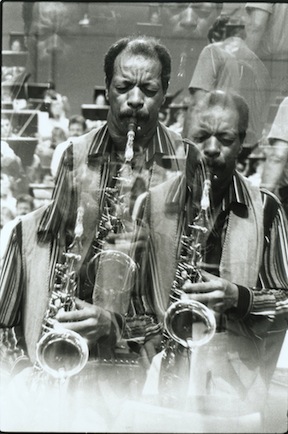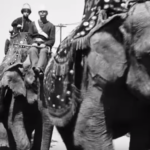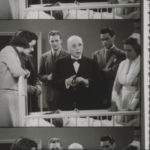More on Shirley Clarke’s Ornette
 More on Shirley Clarke’s Ornette: Portrait of America.
More on Shirley Clarke’s Ornette: Portrait of America.
Richard Brody wrote about it in 2012 when its restoration was under way. He called the restoration a “cause for celebration—both for its value as a movie and for its exploration of Coleman’s art,” and noted “the way that Clarke uses video technology and dramatic reconstructions to evoke Coleman’s way of thinking.”
Brody cites the film again now [15 June 2015] as a good source for insight into Coleman’s art, again in The New Yorker. He notes that Coleman’s music “took visionary turns (as seen in Clarke’s film) that involved technological and sociological experiments, symphony orchestras, international cross-pollination, and, in the nineteen-seventies, plugging in with a band that featured multiple electric guitars and a new theory that he called ‘harmolodics.'”
In a 2011 New Yorker item, Brody drew attention to an online conversation between Coleman and French thinker Jacques Derrida, saying the
indispensable online archive UbuWeb offers a wondrous document for download: a 1997 interview of the crucial modern-jazz musician Ornette Coleman by the crucial modern philosopher Jacques Derrida. (The original English text was lost; the document is translated back from a French translation.) They were, as Derrida notes, born in the same year, 1930 (as was the other key figure of philosophico-artistic late modernity, Jean-Luc Godard), and Derrida does a remarkable job of eliciting the substantial connections between their ideas, which come through in surprising ways.
The Derrida conversation is here.
In Brody’s items, and elsewhere on the usual Information Superhighway platforms, one can find much riveting footage of Ornette Coleman’s music, craft, and thought.
Previous Post: Shirley Clarke's Ornette – Redux
Next Post: Keeping Frank and Caroline Mouris Animated





